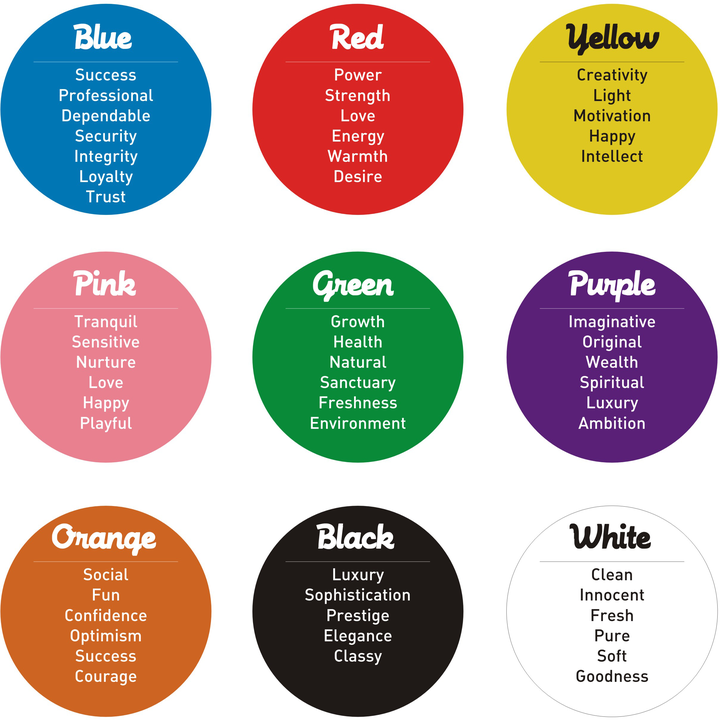How To Build A Brand - 8 Simple Steps To Success

Creating an online store is pretty straightforward but turning that into a successful e-commerce brand is certainly no easy feat. With over 28 million registered small businesses offering competing products, consumers have many options to choose from.
It’s the companies that stand out and appeal to the customer that ultimately survive this difficult digital landscape.
But how do you establish a powerful and recognizable brand?
Whether you’re just starting out or you’re looking to overhaul your existing brand, here’s what you need to know about building a strong identity.
What is a brand?
First off, let’s start by understanding what a brand actually is.
There’s no one simple definition but we like how Marty Neumeier describes it - by setting out what a brand isn’t:
“A brand is not a logo. A brand is not an identity. A brand is not a product… a brand is a person’s gut feeling about a product, service, or organization.”
Why is branding important?
Over time, branding has evolved and become more subjective. It’s much more about perception and accumulated meaning. But it’s key to growing your business.
Branding is the reason we’ve all heard of Coca-Cola, Apple, and Google.
While your name, logo, and design are important, branding goes beyond that – especially when you’re up against these big players with an endless marketing budget.
And you may be thinking, sure, I get that branding is important but I’m a small business so it’s not that relevant to me.
Wrong.
If you’ve got a business, you’ve got a brand and no matter the size of your firm, you want to make the right impression to build customer loyalty.
How to build a brand?
So, you’re up to speed on what a brand is and why it’s important, and you’re ready to learn how to establish your identity.
Well, just know it’s not going to happen overnight, nor is it an easy process. But we’ve broken it down into 7 steps to start you on your way with building your brand.
1. Define your target market and competitors
You can’t be everything to everyone so it’s important to establish who you’re aiming for, as well as your competitors before you even get started.
According to Forbes, this can be broken down into a two-step process:
Determine what needs your products or service fulfill and who is most likely to have those needs, then use a funnel approach to slim down your target market by demographics and preferences until you arrive at a narrow group that is both interested and capable of buying.
Use marketing surveys to collect demographic data on your target market, study existing data and ask friends, family, coworkers etc for their opinions on existing brands in the space.
As you gather your results, make a note of what your potential customers talk about, how they speak and try to figure out their lifestyles and behavior. This will help you create a brand identity that they can understand and relate to.
Through this process you’ll also come across your competitors, so keep in mind the brands that are already established in the market.
2. Establish your brand’s identity
Before building a brand your consumers can trust, you need to decide on its focus and personality.
Try thinking of your brand as a person. We’re all made up of our own beliefs, values, and purposes, which define us as individuals and who we connect with. Those traits determine how we behave, how we dress and what we say.
To help, ask yourself these questions:
- What value does your business provide?
- Does your business have a cause at its core?
- Are there any brand heroes?
You also need to consider what words your brand uses and whether there are any concepts or metaphors that help you best describe it.
3. Name your business
A name can say a lot about a company and while it doesn’t necessarily define the brand, it’s the word consumers will need to come away with.
Deciding on a name is also a huge commitment as it’ll impact your logo, domain, and marketing, so really think it through.
There’s a number of useful online tools to help, including Shopify’s Business Name Generator, but we’d suggest avoiding anything too generic or easy to imitate, as it’s harder to trademark or get an available domain.
Instead consider making up a word - perhaps by blending two together like Pinterest, or removing a letter like Tumblr and perhaps reframing an unrelated word like Apple.
Once you’ve settled on something, try running it by a focus group to see what response you get.
4. Choose your brand colors
There’s more to colors than the overall look of the brand - they invoke certain emotions and convey the feeling you are trying to communicate.
Colors can be loosely linked to keywords, for example, red suggests passion and strength while green represents freshness and calm.
So, have a think about some of the qualities you want to convey and check out a color symbolism chart to give you some inspiration.

Also, colors increase brand recognition by up to 80% so it’s important to consider what palettes your direct competitors are using so consumers can differentiate.
5. Pick the typography
As with colors, the style of font you decide to go for is super important for communicating the visual message of your brand.
Typography is hugely expressive and to look professional you have to get it right.
Whether it’s a popular san serif or a timeless serif, we suggest sticking to two fonts that go well together to avoid confusing the audience and looking messy.
Font Pair lets you browse a wide selection of complementary fonts, or if you like the look of another website’s style you can use Stylify.me for inspiration.
Once you’ve settled on the perfect color and font for your brand,you’ll be able to convey a consistent message through your logo, web-design, invoice design, product packaging and much more.
6. Create a tagline
A creative, catchy slogan could be what sets apart your brand from your competitors and an intrinsic part of your company’s identity.
The best taglines tend to be short, simple and make a strong impression. According to The Washington Post, the top four most memorable slogans are:
- Just Do It! (Nike)
- I’m Lovin’ It (McDonald’s)
- Have It Your Way (Burger King)
- Melts In Your Mouth, Not In Your Hand (M&Ms)
If you’re struggling for ideas try looking at metaphors or even coming up with a rhyme. Alternatively, there are plenty of online slogan generators that might help.
7. Design your logo
When you think about branding, a logo is usually one of the first things that spring to mind. You only have to say McDonald’s to conjure up the image of those famous Golden Arches, or Apple’s, um, Apple.
The logo is your brand’s visual representation - or it’s calling card if you will. You need to map out all the places it’s going to be seen, from social media to favicons.
It also has to be scalable, so if you’re thinking about having text it might be worth considering a version of your logo that has an icon element.
Apps are good examples of this as they have to scale down to fit on devices - take a look at the Netflix logo versus its icon below.

8. Keep your branding consistent
So, you’ve settled on all of the points we mentioned above. Now the key to continuing to build your brand is to remain consistent.
Brand consistency can be done by using the same logo, colors and typography throughout all aspects of your business - from your website to the packaging and even documents like your invoices, quotes or delivery notes.
And remember, you can’t control the individual perceptions of every consumer, but you can listen to what they have to say. And as they develop and grow, don’t be frightened to evolve with them.
If you want more information our Shopify Guidebook 10 Branding Secrets for Online Stores discusses in detail how to master brand consistency through product packaging, content marketing, pricing, amongst other topics.
Professional invoices for Shopify stores
Let Sufio automatically create and send beautiful invoices for every order in your store.
Install Sufio - Automatic Invoices from the Shopify App Store